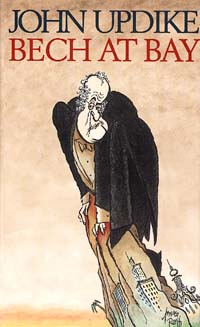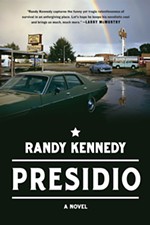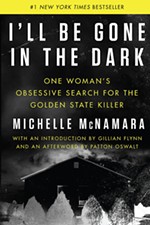Writes of Winter
Fri., Feb. 5, 1999
|
|
The stories collected in The KGB Bar Reader represent "four years of listening," Foster says, the best of the best. This book yaws crazily, unexpectedly, from the homely and the tender to the bizarre and nerve-flaying. Elizabeth Gilbert's journalistic "Buckle Bunnies," a witty and perceptively written essay on the phenomenon of Texas rodeo groupies, the women who mother, nurse, and screw the eight-second champions, gives way without warning to "A Good German," by Diane Lefer, the grim story of an abandoned survivor of a religious survivalist group who is finally overtaken by a 20-year-old insanity. Elissa Schappell's "Novice Bitch" mingles the dreary loneliness of an abortion clinic with the absurdity of dog shows, while A. M. Homes' "His Confession" reveals the knot of guilt and anger and loss that tangles itself around an incident of incest. And can I add, while I'm at it, that Jan Meissner writes the way Lucinda Williams sings? Her story "Placedo Junction" is rich in solitude and solace. A happily married couple living in a small South Texas oil town contemplate which sister to fix up the local (and only) bartender with -- the fun, pretty one or the lonely, plain, religious one? Other stories take the reader to New York City, Kenya, the American Midwest, and Ireland. The KGB Bar Reader covers a travelogue's range of settings, while exhibiting styles that range from the lyrically elegiac, to the laconic, to the most surreal of prose imaginings.
"There may just be one universal story. Someone loses something," editor Ken Foster says in the foreword to The KGB Bar Reader. Taken together, the 28 stories in this book present a detailed study of loss. Repeatedly, something is thrown away, is forcibly taken, is relinquished. It can be youth, as in Helen Schulman's "P.S."; it can be a life, as it is in Rick Moody's "Demonology." The recurring theme of loss holds this collection together, as does the overwhelmingly consistent quality. While not all of the stories are enrapturing ("The Tick," by The Kiss author Kathryn Harrison, with its relentless detail of the murder of, yes, a tick, left me a little cold) virtually all of them have something rich to offer. The Reader also provides a kind of instant photograph of the present generation of writers: risk- taking, inventive, and breathtakingly deft at the art of revelation. These stories are a curtain drawn aside so we, the readers, can stare into hearts like locked rooms.
I used to think that you read stories like these to learn how not to lose. At the moment, however, I am of the opinion that we read stories about loss because loss (we realize, at a certain age, some of us later than others) is inevitable. Loss is inevitable; transcendent, joyous beauty maybe not as much so. You could do worse things with $14 than spend it on a collection of writing of this caliber. You could do few things better. -- Barbara Strickland
|
|
Up against the first two books in this series, Bech at Bay may disappoint. Now in his 70s, Bech has a writing career diluted to writing blurbs for the various fendschrift volumes of his fellow writers, and the author's job (Updike's, that is) of summing up a life that has been lived mostly in retrospect can, at times, irony notwithstanding, be overly sentimental or glossy. Bech even goes so far as to pine for the days when "the young were only asking for a little more freedom, a bit more sex and debourgeoisation, a whiff of pot and a folk concert in a borrowed meadow." The stereotypical longings of ex-hippies everywhere, yes, but there's startlingly more to Bech than this: He steps outside the realm of the written word into life itself, becoming the guide and not the guided, just as in Bech Noir he goes on a rampage, bumping off several adversarial literary critics before he's done.
And he falls in love. Again and again and as ever, Bech falls in love. With a Czech gypsy-dissident and with a leggy blonde ambassador's wife; with a Czech-born associate editor and with the wife of a fellow writer; with a paralegal named Rita; and with a 26-year-old computer salesperson who becomes his partner in crime and the mother of his child (when Bech is 76). However improbable his adventures, sexual and otherwise, Bech emerges as an endearingly ineffectual intellectual clown. When the writing gets murky, as it does in Bech Noir and in Bech Pleads Guilty, we grab onto the familiarity of Bech's weaknesses and simply plow through.
Bech is more than John Updike's means for writing about writing, more than a vehicle to vent frustrations about life and critics and women and the Jewish-American condition and growing old and doubting artistic worth. This writer is among the last of his kind; they're being consumed and rendered obsolete by the mind-numbing progress of the information age and growing old and disappearing into the dust of antiquity while the "new art" confounds and disgusts. At some frustrating point in our lives, at some period of self-doubt and eventual happy resolution, we are all Bech. -- Christopher Hess
|
|
These two thoughts are among the scores of familiar but typically unseen everyday observations -- about work, sex, cars, friendship, movies and airplanes -- you'll encounter within this witty, precise collection. When reading it, expect to experience a sort of cringing recognition:
ï "When someone says to you on the phone, 'Well, I'm going to let you go now,' what they really mean is, 'Well, I'm bored now and/or I simply can't justify talking to you any longer.'"
ï "People have the strangest reaction to free food when in an office environment. Casually announce that there's a platter of danish left over from some meeting, and the same co-workers who wouldn't get off the phone during a fire drill will come racing down the hall."
The book is organized in lists of 11 such thoughts per topic. One chapter is entitled, "Eleven Things I'm Not Proud of but Would Admit for a Small Amount of Money." Why eleven? According to author Amy Krouse Rosenthal, 10 was taken and 12 seemed like too many. When a female friend tells Rosenthal she actually has walked out on one of the author's all-time favorite films, Rosenthal thinks, "Our entire friendship flashed before me: could all my perceptions about her be wrong? In that one irrational moment, every positive trait she possessed was canceled out by the fact that she didn't like this movie."
Since being human isn't necessarily funny until someone points it out for you, The Book of Eleven performs a wonderful service for all of humankind. Rosenthal's is a world in which nothing goes unnoticed. The Chicago-based columnist and former advertising copywriter proves this by solving the eternal equation: "depression + hairspray = country music." And she demonstrates that her mind is a fertile delta, albeit one that's situated on the extreme periphery: "If a plane of lobsters went down in the Andes mountains, and they had to cannibalize one another, they'd be psyched. 'Lobster again? Excellent!'" -- Stuart Wade
|
|
Based on that encapsulation, you might imagine Frank is more suitable for children above the age of about 18, but Frankenstein's dance to the death is perfectly fitting for the intended audience -- Graves brings to the fore gross and squishy things like brains and eyeballs that children delight in. -- Clay Smith
|
|
Well, the view is at least detailed. Diane Solway can research. Following the biography proper there are 50 pages of source notes! Footnotes abound. And for all this meticulous work, the reader is left with no more knowledge of the person Rudolf Nureyev than when the book was cracked. More informed about the minutiae of his life, certainly, but with no more of a sense of who he was.
While I can appreciate the author's desire to let the facts of a person's life speak for themselves, it is a curious thing to have the facts so detailed as to rob the subject's life of all its passion. This book reads like a master's thesis run amok. Such pivotal moments as Nureyev's defection, his love affair with the great Danish dancer Erik Bruhn, his tantrums with Fonteyn, are related with the artistry of a lab assistant peering through a microscope.
Which is ultimately what this biography turns out to be, a look through a microscope into the life of a huge, towering figure. While all the particulars are there, we are left with the task of pulling back from the details and piecing them together to form a dramatic human being of towering proportions. -- Barbara Chisholm
|
Shimmer |
Homophobia is essentially what makes Sylvia Golubowsky, one of Shimmer's main characters, such a tragic figure. Sylvia is an outspoken, intelligent girl who meets rejection at every turn. She's too much for her family, who expect her to demur when her dense brother receives what should have been her job promotion because she is seen as a liability in the workplace for not having signed a loyalty oath. Homophobia is but one of the social pathologies at work in Shimmer. One of the characters, Cal Byfield, is a black playwright with dreams of having his work performed outside of the traditional venues for blacks, but he is foiled at every turn by the prevailing racist mores of the time.
Both of these characters find themselves at the mercy of the Protestant White Male Establishment embodied by the odious Austin Van Cleeve. Austin is a scion of an old-money family of Roosevelt-haters who is the nexus of all the machinations that comprise Shimmer's plot.
Reading Shimmer, it is very obvious that it is a story of how this same Protestant White Male Establishment runs roughshod over Jews, women, gays, and of course, people of color. What is surprising however, is that the forces of political correctness do not triumph in the end because Austin Van Cleeve survives to a sleek and satisfied old age, saving the book from being merely an exercise in political correctness. Schulman says that "the anti-New Dealers that Austin Van Cleeve represents did outlive the ideas of social responsibility at the root of Roosevelt's social programs. I believe that Clinton's final blow to welfare in 1996 marked the end of a more than 50-year battle by the greedy to defeat the New Deal, so I had him outlive his opposition both literally and metaphorically as well."
All of this is to Shimmer's benefit. Schulman's noir vision of New York is a place where all the endings are not necessarily happy, making what could have been a PC diatribe into an interesting story of politics and human frailty. -- John Baker













